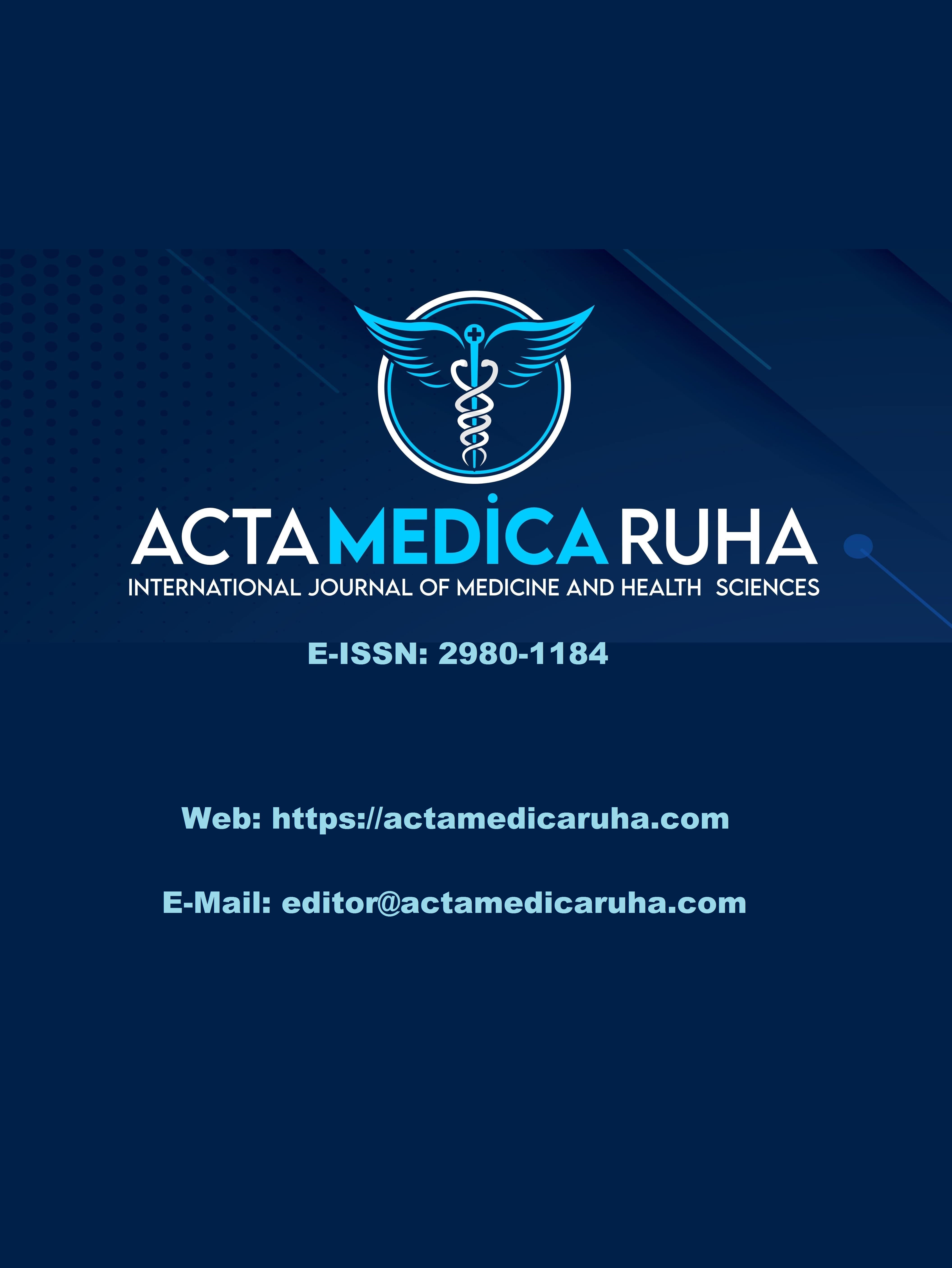Investigation of carriage of the same strain in feces in Urinary System Infections Caused by Extended Spectrum Beta-Lactamase Producing Escherichia coli Strains
Research Article
DOI:
https://doi.org/10.5281/zenodo.8313339Keywords:
Urinary Tract İnfection, Faecal Colonisation, ESBL Producing E. coliAbstract
Introduction-Objective: We aimed to determinate the risk factors, contribution of fecal carriage to the infection and precautions to be taken in the prevention of infection in (+) E. coli-induced UTIs in urinary tract infections (UTI) caused by ESBL (+) E. coli
Method: This study was designed as a single-center, prospective and cross-sectional. 64 patients between the ages of 18-79 who were hospitalized and ESBL(+) E.coli isolated in their urine culture were included. Stool samples taken from the patients (0,3,5 and 7 days) were inoculated on EMB agar containing cefotaxime and ceftazidime and IMVIC was used to identify colonies. Strains determined as E. coli according to their reproductive characteristics were included in the study. Phenotypic confirmation tests for the detection of ESBL(+) strains. Genotyping was performed using the ERIC PCR method. Descriptive statistics were expressed as numbers and percentages. Chi-square and trend chi-square tests were used for analytical comparisons. A P value of <0.05 was considered statistically significant.
Results: Of the 64 patients 40 (62.5%) were female and the mean age was 56.5 ± 17.5 (18-79). 47 (69%) were diagnosed with CA- UTI, and 17 (31%) with HA-UTI. Having more than three episodes per year and presence of a foreign device were found to be a risk factor for CA- ESBL (+) E. coli-induced UTI (p:0.035and 0.006). It was found that faecal colonization of ESBL (+) E. coli persisted in 15 (23%) of 64 patients after UTI treatment, and, of them 20% (n: 3) was in the same phylogenetic class with the ERIC PCR method. Faecal colonization was found to be significantly higher in patients with invasive intervention in the previous year (p:0.037).
Conclusion: Unnecessary antibiotic use should be avoided due to resistant infections and increased colonization. The importance of fecal colonization in infections with ESBL-producing bacteria (especially UTI) has been demonstrated in studies. More prospective studies are needed to understand the epidemiology of ESBL enzyme types.
References
Echols RM, Tosiello RL, Haverstock DC, Tice AD. Demographic, clinical, and treatment parameters influencing the outcome of acute cystitis. Clin Infect Dis. 1999;29(1):113-119.
Livermore DM, Canton R, Gniadkowski M, Nordmann P, Rossolini GM, Arlet G, Ayala J, Coque TM, Kern-Zdanowicz I, Luzzaro F, Poirel L, Woodford N. 2007. CTX-M: changing the face of ESBLs in Europe. J Antimicrob Chemother. 2007; 59(2):165–174.
Toombs-Ruane LJ, Benschop J, Burgess S, Priest P, Murdoch DR, French NP. Multidrug resistant Enterobacteriaceae in New Zealand: a current perspective. N Z Vet J. 2017;65(2):62–70.
Rodriguez-Bano J, Alcala JC, Cisneros JM, et al. Community infections caused by extended spectrum beta lactamase producing E.coli. Arch Intern Med. 2008; 168(17): 1897-1902.
Hu F, Guo Y, Yang Y, et al. Resistance reported from China antimicrobial surveillance network (CHINET) in 2018. Eur J Clin Microbiol Infect Dis. 2019;38(12):2275-2281.
Lob SH, Nicolle LE, Hoban DJ, Kazmierczak KM, Badal RE, Sahm DF. Susceptibility patterns and ESBL rates of Escherichia coli from urinary tract infections in Canada and the United States, SMART 2010-2014. Diagn Microbiol Infect Dis. 2016;85(4):459-465.
van Driel AA, Notermans DW, Meima A, et al. Antibiotic resistance of Escherichia coli isolated from uncomplicated UTI in general practice patients over a 10-year period. Eur J Clin Microbiol Infect Dis. 2019;38(11):2151-2158.
Richelsen R, Smit J, Anru PL, Schønheyder HC, Nielsen H. Incidence of community-onset extended-spectrum β-lactamase-producing Escherichia coli and Klebsiella pneumoniae infections: an 11-year population-based study in Denmark. Infect Dis (Lond). 2020;52(8):547-556.
Koksal I, Yilmaz G, Unal S, et al. Epidemiology and susceptibility of pathogens from SMART 2011-12 Turkey: evaluation of hospital-acquired versus community-acquired urinary tract infections and ICU- versus non-ICU-associated intra-abdominal infections. J Antimicrob Chemother. 2017;72(5):1364-1372.
Valverde A, Coque TM, Sánchez-Moreno MP, Rollán A, Baquero F, Cantón R. Dramatic increase in prevalence of fecal carriage of extended-spectrum beta-lactamase-producing Enterobacteriaceae during nonoutbreak situations in Spain. J Clin Microbiol. 2004;42(10):4769-4775.
Ben-Ami R, Schwaber MJ, Navon-Venezia S,et al. Influx of extended-spectrum beta-lactamase-producing Enterobacteriaceae into the hospital. Clin İnfect Dis. 2006; 42(7): 925-34.
Woerther PL, Angebault C, Lescat M, Ruppé E, Skurnik D, El Mniai AE, Clermont O, Jacquier H, Da Costa A, Renard M et al. Emergence and dissemination of extended-spectrum beta lactamase producing Escherichia coli in the community: lessons from the study of a remote and controlled population. J Infect Dis. 2010; 202(4): 515-523.
Bezabih YM, Sabiiti W, Alamneh E, et al. The global prevalence and trend of human intestinal carriage of ESBL-producing Escherichia coli in the community. J Antimicrob Chemother. 2021;76(1):22-29.
Çakir Erdoğan D, Cömert F, Aktaş E, Köktürk F, Külah C. Fecal carriage of extended-spectrum beta-lactamase-producing Escherichia coli and Klebsiella spp. in a Turkish community. Turk J Med Sci. 2017;47(1):172-179.
Kurt Azap Ö, Arslan H, Özbalıkçı Karaman S, Togan T. Risk factor for fecal carriage of extended-spectrum beta-lactamase-producing Escherichia coli and Klebsiella spp. in the community. Turk J Med. 2007;37(1): 31-38.
Küçükbasmacı Ö. Dışkıda genişlemiş spektrumlu beta-laktamaz üreten Enterobacteriaceae üyelerinin prevalansının araştırılması. Türk Mikrobiyoloji Cemiyeti Dergisi. 2009; 39(3-4): 85-88.
Tükenmez Tigen E, Ergönül Ö, Altınkanat G, Özgen M, Ertürk Şengel B, et al. Impact of fecal carriage of extended-spectrum beta-lactamase producing Enterobacteriaceae on the outcomes of transrectal needle biopsies of the prostate. Marmara Medical Journal. 2013; 26(3): 127-129.
Centers for Disease Control and Prevention https://www.cdc.gov/infectioncontrol/pdf/guidelines/cauti-guidelines-H.pdf (Erişim tarihi:24.08.2023)
Clinical and Laboratory Standards Institute, “Performance standards for antimicrobial susceptibility testing,” in Informational Supplement, M100-S, CLSI, the Clinical and Laboratory Standards Institute 2017, Wayne, PA, USA, 27th edition, 2017.
Ventura M, Zink R. Rapid identification, differentiation and proposed new taxonomic classification of Bifidobacterium lactis. Applied and Environmental Microbiology. 2002; 68(12): 6429-6934.
Rodriguez-Bano J, Navarro MD, Romero L, et al. Clinical and molecular epidemiology of extended-spectrum beta-lactamase-producing Escherichia coli as a cause of nosocomial infection or colonization: implications for control. Clin Infect Dis. 2006;42(1):37-45.
Colodner R, Rock W, Chazan B, Keller N, Guy N, Sakran W et al. Risk factors for the development of extended-spectrum beta-lactamase-producing bacteria in nonhospitalized patients. Eur J Clin Microbiol Infect Dis. 2004;23(3):163-167.
Moor CT, Roberts SA, Simmons G, et al. Extended-spectrum beta-lactamase (ESBL)-producing enterobacteria: factors associated with infection in the community setting, Auckland, New Zealand. J Hosp Infect. 2008;68(4):355-362.
Paterson DL, Bonomo RA. Extended-spectrum beta-lactamases: a clinical update, Clin Microbiol Rev. 2005;18(4): 657-86.
Karanika S, Karantanos T, Arvanitis M, Grigoras C, Mylonakis E. Fecal colonization with extended-spectrum beta-lactamase-producing Enterobacteriaceae and risk factors among healthy individuals: a systematic review and metaanalysis. Clin Infect Dis. 2016;63(3):310–318.
Yılmaz N, Ağuş N, Bayram A, et al. Antimicrobial susceptibilities of Escherichia coli isolates as agents of community-acquired urinary tract infection (2008-2014). Turk J Urol. 2016;42(1) :32–36.
Kızılates F, Yakupogulları,Y, Berk H, Oztoprak N, Otlu B. Risk factors for fecal carriage of extended-spectrum beta-lactamase-producing and carbapenem-resistant Escherichia coli and Klebsiella pneumoniae strains among patients at hospital admission. Am J Infect Control. 2021;49(3):333-339.
Donskey CJ. Antibiotic regimens and intestinal colonization with antibiotic-resistant gram-negative bacilli. Clin Infect Dis. 2006;43 Suppl 2:S62-S69.
Rodriguez-Bano J, Lopez-Cerero L, Navarro MD, Diaz de Alba P, Pascual A. Faecal carriage of extended-spectrum beta-lactamase-producing Escherichia coli: prevalence, risk factors and molecular epidemiology. J Antimicrob Chemother. 2008;62(5): 1142– 1149.
Ruppe E, Lixandru B, Cojocaru R, et al. Relative fecal abundance of extended-spectrum beta-lactamase producing Escherichia coli strains and their occurence in urinary tract infections in women. Antimicrob Agents Chemother. 2013; 57(9): 4512–4517.
Downloads
Published
How to Cite
Issue
Section
License
Copyright (c) 2023 Acta Medica Ruha

This work is licensed under a Creative Commons Attribution 4.0 International License.











